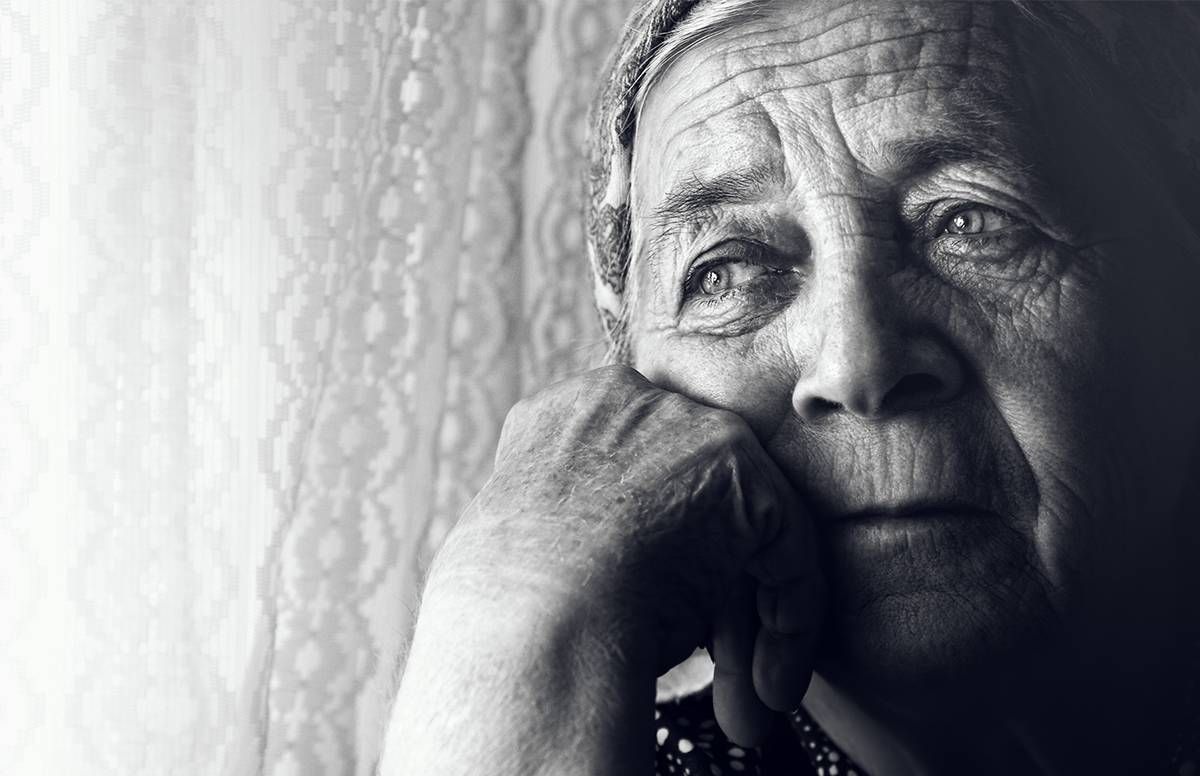How the Pandemic Has Increased Suicidal Thoughts
What to do to help yourself or a loved one
For most of us, the pandemic is the first time we've experienced long-term physical separation from others. Even the most introverted among us needs that in-person connection, even if it's just to say hello to a cashier at the grocery store.

Not only has loneliness increased during COVID-19, but along with it has come an increase in depression and suicidal thoughts, according to research published in the August 2020 issue of Psychiatry Research.
A chilling statistic: In a June 2020 survey by the Centers for Disease Prevention and Control (CDC), 10.7% of respondents said they had seriously considered suicide in the 30 days prior to completing the survey. Compare this to the 2018 National Survey on Drug Use and Health, where 4.3% of adults had considered suicide.
September is National Suicide Prevention Month, and September 10 is World Suicide Prevention Day. Both serve as reminders to raise awareness of suicide, think about everyone affected by it and help those in need. (The Rewire.org site, our Next Avenue partner, has a useful story on the latter: "How to Help a Friend Who Is Feeling Suicidal — Without Calling 911.")
Older Americans and Suicidal Thoughts During COVID-19
Before the pandemic, many older Americans had reported being lonely — 43% of adults over 65, according to research from the University of California.
"Since the pandemic, I have noticed more older adults presenting for inpatient psychiatric care with reports of suicidal thoughts or actual suicide attempts."
COVID-19 has exacerbated loneliness in older adults who have not been able to take part in regular activities with others. No more card games, going out for dinner or going to the movies. Adult day care and senior centers are closed. Aides and caregivers may be socially distancing.
Research shows that loneliness can lead to depression, and depression can lead to suicidal thoughts.
"Since the pandemic, I have noticed more older adults presenting for inpatient psychiatric care with reports of suicidal thoughts or actual suicide attempts. Some of these older adults do not have a history of suicidality in the past," says Megan M. Walsh, a nurse practitioner and assistant clinical professor at Drexel University, who works per diem for a geriatric psychiatric unit in Colorado.
Our Commitment to Covering the Coronavirus
We are committed to reliable reporting on the risks of the coronavirus and steps you can take to benefit you, your loved ones and others in your community. Read Next Avenue's Coronavirus Coverage.
Dr. Howard Pratt, a psychiatrist at Community Health of South Florida, has seen an increase in the number of older patients in his practice during COVID-19.

"Since the onset of the pandemic, the number of patients over 65 coming in to see me has tripled," he says. "I am seeing a lot of new patients, many of whom have never been to a psychiatrist before, and some are having suicidal thoughts. Also of note is that the majority of these new patients are men."
Kimberly Garcia, board-certified family, gerontological and family psychiatric nurse practitioner and director of the Psychiatric Mental Health Nurse Practitioner track and assistant clinical professor at Drexel University, agrees that suicidal thoughts have increased in the older adults she works with lately.
"This is especially true in those individuals who do not have family members or friends in the area to assist them," she says.
Garcia shared a situation that one of her patients experienced during the pandemic.

"One of my older adult patients had no way to get to the grocery store. She was afraid to take public transportation and taxis were hard to come by. Because she was not tech savvy and had no access to the internet, she was not aware of grocery delivery services. Out of desperation, as her food supplies dwindled, she ordered fruit baskets by phone from a local florist. She had gone nearly five weeks without any contact with others, and her church services were now online. Her medical appointments were cancelled and without a computer, she was unable to participate in telehealth services," says Garcia, adding that her patient felt isolated and alone, hungry and weak.
"She told me she wondered 'Why should I continue like this? What kind of existence is this? What is the purpose of my life?'" Garcia says. "She considered taking all of her medications in an effort to end her life."
Older Adults and Suicide
In 2018, according to data compiled by the Suicide Prevention Resource Center, the suicide rates were higher among adults ages 45 to 54 (20.04 per

100,000) and 55 to 64 (20.20 per 100,000), with the rate highest among adults ages 52 to 59 (21.56 per 100,000). For ages 65 and over, it's 17.36 per 100,000.
The takeaway: While teen suicide rates get a lot of attention, and suicide remains the second leading cause of death for those 15-34, younger groups have had consistently lower suicide rates than middle-aged and older adults.
Why do middle-aged and older Americans consider suicide?
"Major life changes can lead to depressed thoughts, as we get older," notes Julie Smirl, of Nashville, Ill., an expert in geriatric counseling and an assistant professor at Bradley University's online masters of counseling program. "Difficulty finding a job, the loss of a spouse, finding out you have cancer, moving to a long-term care facility, having your kids take away the keys to your car — for many, it's hard to balance those emotions."
In addition, Smirl says, retirement is a big issue.
"A large part of some people's identities is tied up with their work. Depression and suicidal thoughts can occur if someone doesn't find meaningful activities after retirement," she notes.
What Are Some Warning Signs?
Jerry Reed, senior vice president for practice leadership at the Education Development Center, a nonprofit based in Waltham, Mass., has spent much of his career focusing on suicide in older adults and headed the National Suicide Prevention Resource Center from 2008 to 2017.

He shared some signs that may indicate someone is suicidal:
- Withdrawal: Pulling away from people, low energy, turning to alcohol or drugs
- Emotional distress: For example, if someone says ‘‘I’m thinking of ending my life”
- Behavioral Changes: If someone’s behavior is dramatically different now vs. three weeks ago
Smirl offers additional insights. "Pay attention if they start giving things away or if you hear phrases like 'Life's not worth living' or 'I'm just a burden to everyone.' When someone feels helpless, hopeless and/or worthless, it's likely that suicidal thoughts are there," she says.
The American Foundation for Suicide Prevention has a comprehensive list of warning signs.
3 Ways You Can Help Others
If you suspect a loved one is struggling, here are three ways to reach out:
Just ask. "Research shows people who are having thoughts of suicide feel better when someone asks after them in a caring way. Findings suggest acknowledging and talking about suicide may reduce rather than increase suicidal ideation," according to the Suicide Prevention Lifeline.
The organization suggests asking, "Are you thinking about killing yourself?"
Reed adds, "Let them know you're not judging them, and acknowledge that their feelings are real. Remind them that they're not alone in dealing with this struggle, and that you're there to help in any way you can."
Connect more and ask the same of others. Before there were Zoom calls, there were (and still are) telephone calls. If you can't be there in person, pick up the phone and say "Hi." Often. And make sure to ask family and friends to do the same. You can even create a calling schedule, to ensure that the lonely adult has something to look forward to each day.
Spending time in the company of others, especially during COVID-19, is important, too. Even a visit from someone delivering Meals on Wheels can provide a boost.
And if you can't be there in person due to COVID-19, ask a relative, friend or neighbor to check in on your loved one. Eating outside together (but remember — six feet apart) is one idea. Having a conversation with a neighbor from the doorway counts, too.
"Findings suggest acknowledging and talking about suicide may reduce rather than increase suicidal ideation."
While it can be difficult to determine someone's feelings virtually, it's much easier to do so in person. The more people that have "eyes on" your favorite older adult, the more quickly any depressed or suicidal thoughts can be addressed.
If you'd like a professional opinion, consider asking the person's Primary Care Provider (PCP) to do a mental health check at an upcoming in-person or telehealth visit. If necessary, the PCP can enlist the services of a mental health counselor as part of regular visits in a collaborative care plan, says Reed.
Local Areas on Aging (AAAs) are another good resource. They often provide mental health services and support groups, in person, and, during the pandemic, virtually.
Reach out even more to the older men in your life. Did you know that the rate of suicide is highest in middle-aged white men, and that in 2018, men died by suicide over three times more often than women, according to CDC data compiled by the American Foundation for Suicide Prevention?
During the pandemic, many middle-aged men in particular are feeling the devastating effects of job and financial losses. But they may not talk much about their feelings. Plus, men don't have the social support groups that women do, as a rule.
Make a special effort to let them know you care. If the men are finding it difficult to find ways to connect with others, consider suggesting a support group. Reed is a fan of Men's Sheds, where groups of men get together to work on projects and socialize.
What to Do If You Need Help Now
If you're feeling overcome with thoughts of not wanting to live or suicide, you can get help right away:
- Call 911 or your local emergency number immediately.
- Call the U.S. National Suicide Prevention Lifeline at 800-273-8255 any time of day; it's open seven days a week, every day of the year.
- If you’re a veteran, you can get help through the Veterans Crisis Line by pressing prompt “1.” Otherwise you will be routed to the nearest local crisis call center.
- Text the word “home” to 741741 to immediately be connected to a text counselor.
How Intervention Can Make a Difference
Garcia shared what happened after she found out about the patient she referenced who was considering ending her life:
"We sent a crisis intervention team to her home. She was not taken to the hospital because, honestly, that felt like the most dangerous place to go due to the influx of COVID patients," Garcia says. "The partial hospitalization programs were operating via Zoom, which wasn't an option. The crisis team came to see her daily until we were able to get an intensive case worker involved."
Today, the woman is doing much better.
"She is still working with the intensive case worker and now has a peer support specialist. She is getting home visits regularly, is in psychotherapy via the telephone and I speak with her biweekly to check on her progress," says Garcia. "She had a medication adjustment and was able to avoid the hospital. She is no longer ordering food baskets; her groceries are delivered by Peapod. And she has even (made a phone call) and had a pizza delivered."


